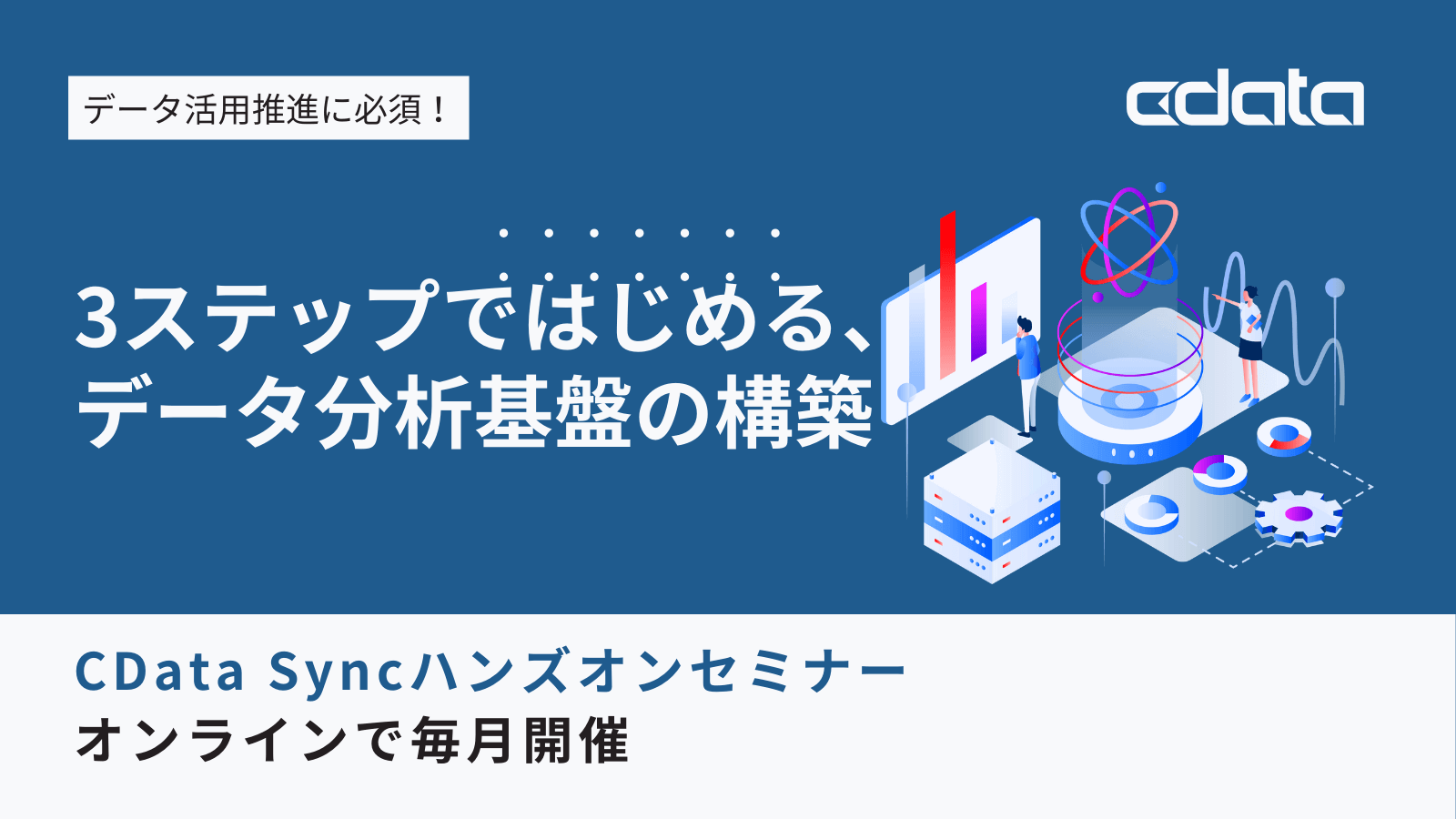ノーコードでクラウド上のデータとの連携を実現。
詳細はこちら →CData Software Japan - ナレッジベース
Latest Articles
- MySQL のデータをノーコードでREST API として公開する方法:CData API Server
- CData Sync AMI をAmazon Web Services(AWS)で起動
- Connect Cloud Guide: Derived Views, Saved Queries, and Custom Reports
- Connect Cloud Guide: SSO (Single Sign-On) and User-Defined Credentials
- Connect Cloud クイックスタート
- Shopify APIのバージョンアップに伴う弊社製品の対応について
Latest KB Entries
- DBAmp: Serial Number Expiration Date Shows 1999 or Expired
- CData Drivers のライセンスについて
- Spring4Shell に関する概要
- Update Required: HubSpot Connectivity
- CData Sync で差分更新を設定
- Apache Log4j2 Overview
ODBC Drivers
- [ article ] Active Query Builder を使用してAirtable 駆動型アプリを素早く開発
- [ article ] QlikView でReckon Accounts Hosted データにODBC ...
- [ article ] Excel からMicrosoft Query を使ってAutify に接続する方法
- [ article ] PHP でMySQL からGoogle Ads データにアクセス
JDBC Drivers
- [ article ] MicroStrategy Web でCData Software JDBC Driver for ...
- [ article ] JDBI からMicrosoft Project のデータアクセスオブジェクトを作成
- [ article ] Jaspersoft Studio からGoogle Analytics データに接続する方法
- [ article ] KNIME でCosmos DB のJDBC ドライバーを有効にする
SSIS Components
- [ article ] SAP ByDesign をSSIS 経由でSQL サーバーにバックアップする
- [ article ] Smartsheet をSSIS 経由でSQL サーバーにバックアップする
- [ article ] ServiceNow をSSIS 経由でSQL サーバーにバックアップする
- [ article ] LinkedIn をSSIS 経由でSQL サーバーにバックアップする
ADO.NET Providers
- [ article ] PowerShell からCertinia データに接続してデータの更新・挿入・削除を実行する方法
- [ article ] ColdFusion にリアルタイムAsana データをインポートしてアプリケーションを構築
- [ article ] Databricks データを使ったCrystal Reports を発行
- [ article ] Entity Framework 6 からJSON データに連携
Excel Add-Ins
- [ article ] Microsoft Power Query からPinterest データに連携してExcel ...
- [ article ] SharePoint Excel Services データをBoomi AtomSphere ...
- [ article ] Mac OS X 上のMS Excel でAzure Synapse データを連携利用
- [ article ] CDATAQUERY 関数を使って、Excel スプレッドシートにSquare を自動挿入
API Server
- [ article ] データベース・ソリューションSkyLink でOData データを連携利用
- [ article ] ノーコードアプリ開発プラットフォーム bubble でExcel にアクセス
- [ article ] Tableau Cloud でExcel データを参照する3つの方法
- [ article ] OData データを使ったCrystal Reports を発行
Data Sync
- [ article ] Snowflake へのPostgreSQL データのETL/ELT ...
- [ article ] 複数RSS アカウントをレプリケーション
- [ article ] Gmail データからSQL Server に接続する4つの方法をご紹介。あなたにピッタリな方法は?
- [ article ] Amazon Redshift へのGoogle Analytics データのETL/ELT ...
Windows PowerShell
- [ article ] PowerShell からGoogle Calendar ...
- [ article ] LinkedIn データをPowerShell でMySQL にレプリケーションする方法
- [ article ] PowerShell からSAP データに接続してデータの更新・挿入・削除を実行する方法
- [ article ] MariaDB データをPowerShell でMySQL にレプリケーションする方法
FireDAC Components
- [ article ] Delphi のWooCommerce データへのデータバインドコントロール
- [ article ] Delphi のHBase データへのデータバインドコントロール
- [ article ] Delphi のOracle データへのデータバインドコントロール
- [ article ] Delphi のLinkedIn Ads データへのデータバインドコントロール






